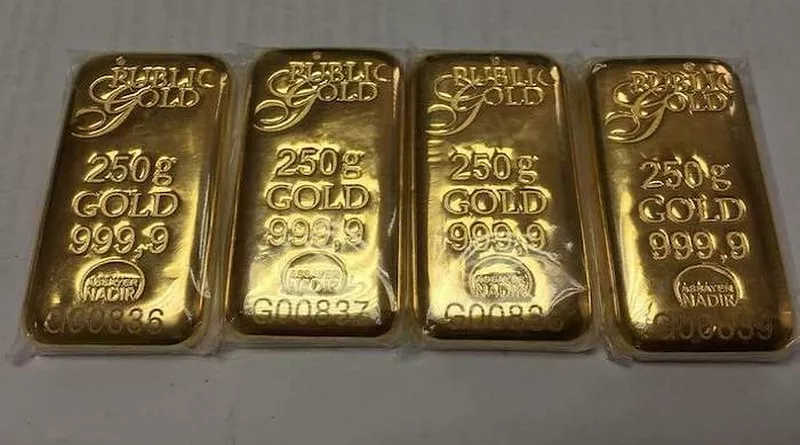Gold has been a symbol of wealth and prosperity for centuries. Its timeless allure makes it a popular choice for jewelry and investment. However, as the demand for gold continues to rise, so does the prevalence of fake gold in the market. Whether you’re a jeweler, an investor, or simply a consumer looking to buy genuine gold, it’s crucial to know how to tell real gold from fake. This comprehensive guide will equip you with the knowledge and techniques to make an informed decision.
Understanding Gold Purity
Before diving into the methods of detecting fake gold, it’s essential to understand gold purity and the significance of karats. Gold purity is measured in karats (K), with 24K being pure gold. However, pure gold is too soft for most applications, so it’s often alloyed with other metals to increase its durability. Common gold alloys include 18K (75% gold), 14K (58.3% gold), and 10K (41.7% gold). The higher the karat, the more gold there is in the alloy, and the more valuable it is.
Visual Inspection
Visual inspection is one of the simplest methods to distinguish real gold from fake. While it may not provide foolproof results, it can give you valuable initial insights. Here are some aspects to consider:
Color: Real gold has a distinct, warm, and rich yellow color. It doesn’t tarnish or change color over time. Be cautious of gold-plated items that may appear golden but are not solid gold.
Luster: Authentic gold has a bright, metallic luster. It reflects light with a distinct brilliance that sets it apart from most other metals.
Hallmarks and Stamps: Look for hallmarks and stamps on jewelry and coins. These markings indicate the gold’s purity and authenticity. For example, a 14K gold item should have “14K” or “585” stamped on it.
The Magnet Test
The magnet test is a quick and easy way to rule out certain fake gold items. Gold is not magnetic, so if a piece of jewelry or a coin is attracted to a magnet, it’s likely not real gold. However, keep in mind that some gold alloys can be very slightly magnetic, so this test is not foolproof.
The Density Test
Gold is a dense metal, and its density can be used to differentiate it from other materials. To perform the density test, you’ll need a scale and a container of water. Follow these steps:
Step 1: Weigh the item in question on a scale to determine its mass in grams (g).
Step 2: Fill a container with water and note its initial water level.
Step 3: Gently submerge the item in the water and measure the increase in water level.
Step 4: Divide the item’s mass (in grams) by the increase in water level (in milliliters). This ratio should be close to 19.32 g/mL, which is the approximate density of gold.
If the calculated density significantly differs from 19.32 g/mL, it’s likely that the item is not real gold.
The Nitric Acid Test
The nitric acid test is a more advanced method that should be conducted with caution. Nitric acid can be hazardous, so take appropriate safety precautions, such as wearing gloves and eye protection. To perform the nitric acid test:
Step 1: Make a small scratch on an inconspicuous part of the item.
Step 2: Apply a small drop of nitric acid to the scratch.
Step 3: Observe the reaction. Real gold will not react to nitric acid, while fake gold or gold-plated items will produce a chemical reaction, often resulting in effervescence or a color change.
The Scratch Test
The scratch test can help determine the purity of gold. Since gold is a soft metal, it’s easily scratched by other materials. However, the scratch test is best suited for assessing the authenticity of higher-karat gold (18K and above). Here’s how it works:
Step 1: Select an inconspicuous area of the item, preferably on a clasp or edge.
Step 2: Use a common item with a known hardness, such as a nail or a copper penny, to make a small, shallow scratch on the gold surface.
Step 3: Examine the scratch closely. If the item is genuine gold, it should show no signs of discoloration or a different metal underneath the scratch. Fake gold or gold-plated items may reveal a different color or base metal underneath the scratch.
Acid Scratch Test
The acid scratch test is another way to assess gold’s purity. This test involves using different acid solutions of varying strengths on the item in question. However, like the nitric acid test, it should be conducted with care, wearing appropriate safety gear.
Step 1: Scratch the item on a test stone to create a small, visible streak.
Step 2: Apply various acid solutions with different strengths to the streak and observe the reactions. Real gold should not significantly react with these acids.
Step 3: Record your observations and compare them to known reactions to determine the gold’s purity.
Professional Testing
If you have any doubts about the authenticity of your gold item or want a more precise assessment of its purity, consider seeking the services of a professional jeweler or a reputable assay office. These experts have access to specialized equipment, such as X-ray fluorescence (XRF) analyzers, that can accurately determine gold purity.
Conclusion
Distinguishing real gold from fake requires a combination of visual inspection and testing methods. While no single test is infallible, a combination of these techniques can provide a clear indication of a gold item’s authenticity and purity. Remember to exercise caution and seek professional assistance when in doubt, especially when dealing with valuable gold items. By being well-informed and vigilant, you can confidently invest in or enjoy your gold jewelry and coins for years to come.


